#Vipassana Meditation
Photo
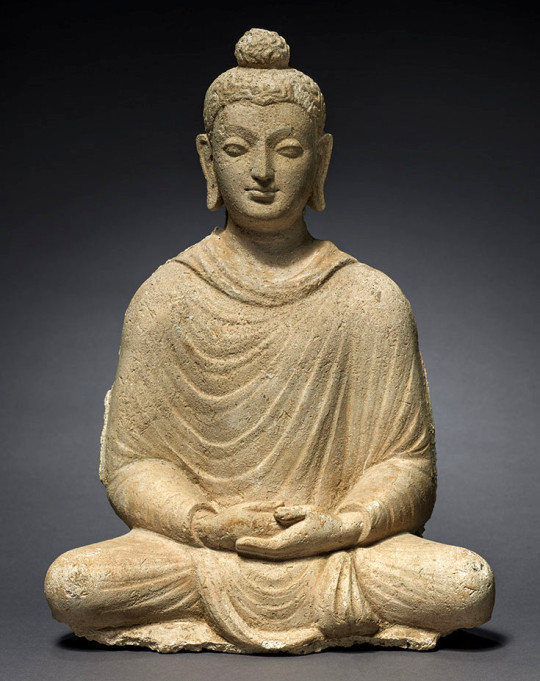
The Quest for Buddhism (114)
Buddhist cosmology
Anapanasati - "mindfulness of breathing"
Anapanasati (Skt.anapanasmrti), meaning "mindfulness of breathing" that "sati" means mindfulness; "anapana" refers to inhalation and exhalation, paying attention to the breath. It is a type of cessation (samatha meditation Ref) in which consciousness is calmed and focussed by being aware of the in-breath and out-breath (breath), or counting breath. In a broader sense, it moves from there to the observation of the body and includes the area of contemplation (vipassana meditation), which corresponds to the 4 presences of mindfulness (Pali: cattaro satipatthana), that is one of the seven sets of thirty-seven qualities (Ref2).
It is the quintessential form of Buddhist meditation, attributed to Gautama Buddha, and described in several suttas, most notably the Anapanasati Sutta.
Derivations of anapanasati are common to Tibetan, Zen, Tiantai and Theravada Buddhism as well as Western-based mindfulness programs.

仏教の探求 (114)
仏教の宇宙論
安那般那念〜「呼吸の心得」
安那般那念 (あんなはんなねん、巴: アーナーパーナ・サティ、梵: アーナーパーナ・スリムティ)とは、「呼吸の心得」を意味する、呼吸に注意を向ける瞑想法である。「サティ」は心得、「アーナーパーナ」は入出息 (呼吸)を意味する。息を吸ったり吐いたりすること(呼吸)を意識すること、または息を数えることによって意識を静め、集中させるサマタ瞑想 (止行:参照)の一種、ないしは導入的な一段階を意味するが、広義には、そこから身体の観察へと移行していき、四念処 (しねんじょ、巴:チャッターロー・サティパッターナー)に相当するヴィパッサナー瞑想 (観行)の領域も含む。四念処 (しねんじょ) とは、仏教における悟りのための4種の観想法の総称で、三十七道品(参照2)の中の1つ。
仏教の瞑想の真髄であり、ゴータマ・ブッダのものとされ、安般念経 (あんはんなねんきょう、巴: アーナーパーナ・サティ・スッタ) をはじめとするいくつかの経典に記述されている。
チベット仏教、禅宗、天台宗、上座部仏教、西洋のマインドフルネスプログラムに共通するのは、安那般那念 (あんなはんなねん、巴: アーナーパーナ・サティ) が由来している。
#anapanasati#mindfulness of breathing#samatha meditation#buddhism#vipassana meditation#buddha#forest mushrooms#mindfulness#nature#art
110 notes
·
View notes
Audio
Listen/purchase: Spiritual Ambient Sound / Meditation Music 101 by TAKEO SUZUKI
#bandcamp#ambient music#spiritual ambient#electronic music#electronic ambient#trance music#trance ambient#meditation music#yoga music#trance meditation#vipassana meditation#ambient musician#japanese artist#takeo suzuki#japan
2 notes
·
View notes
Text
Meditation:
The Gateway to Inner Tranquillity
In the modern world of constant change, where stress and anxiety seem to be lifelong companions, finding quiet moments becomes more and more important. Meditation offers a sanctuary amidst the chaos, allowing individuals to reconnect with themselves and attain inner harmony. Among the plethora of meditation techniques, transcendental meditation, vipassana and guided meditation stand out as powerful tools for self-discovery and personal growth.
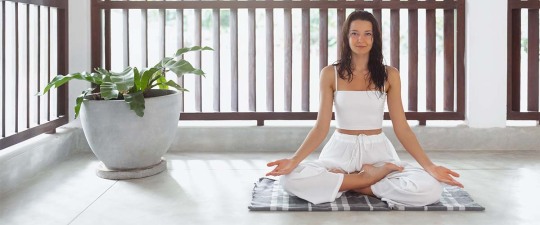
What is Meditation?
Meditation is more than just sitting cross-legged and chanting "om." It's a practice that involves training the mind to achieve a state of focused awareness and inner calm. Whether you're seeking stress relief, clarity of mind, or spiritual growth, meditation offers a myriad of benefits.
Understanding Transcendental Meditation
Transcendental meditation (TM) is a technique that involves silently repeating a mantra to transcend ordinary thought and reach a state of pure awareness. It's like diving deep into the ocean of consciousness, where the mind experiences profound stillness and bliss. TM is renowned for its simplicity and effectiveness in promoting relaxation and reducing stress.
Delving into Vipassana Meditation
Vipassana meditation, originating from ancient Buddhist traditions, emphasizes mindfulness and insight. Unlike TM, which focuses on transcending thoughts, Vipassana encourages practitioners to observe their thoughts and sensations without judgment. Through this practice, individuals gain a deeper understanding of their inner workings and cultivate compassion and equanimity.
Exploring Guided Meditation
For those new to meditation or seeking structured guidance, guided meditation offers a gentle introduction. In guided sessions, a narrator leads participants through visualization exercises, breathing techniques and relaxation prompts. It's like having a personal tour guide through the landscapes of your mind, making meditation accessible and enjoyable for beginners.
Benefits of Meditation
1. Physical Health
Meditation isn't just good for the mind; it's beneficial for the body too. Research suggests that regular meditation practice can lower blood pressure, improve immune function and even alleviate chronic pain.
2. Mental Well-being
In today's hectic world, mental health is more important than ever. Meditation has been shown to reduce symptoms of anxiety, depression and insomnia, promoting overall well-being and resilience.
3. Stress Reduction
Feeling overwhelmed? Take a deep breath and meditate. Studies have demonstrated that meditation can lower cortisol levels, the hormone associated with stress, helping you feel calmer and more centered.
4. Emotional Balance
Life is full of ups and downs, but meditation can help you navigate the emotional rollercoaster with grace. By cultivating mindfulness and self-awareness, you can respond to challenging situations with clarity and composure.
5. Enhanced Self-awareness
Who are you, really? Meditation offers a window into the depths of your being, allowing you to explore your thoughts, emotions and beliefs with curiosity and compassion. Through self-reflection, you can uncover hidden truths and cultivate a deeper sense of authenticity.
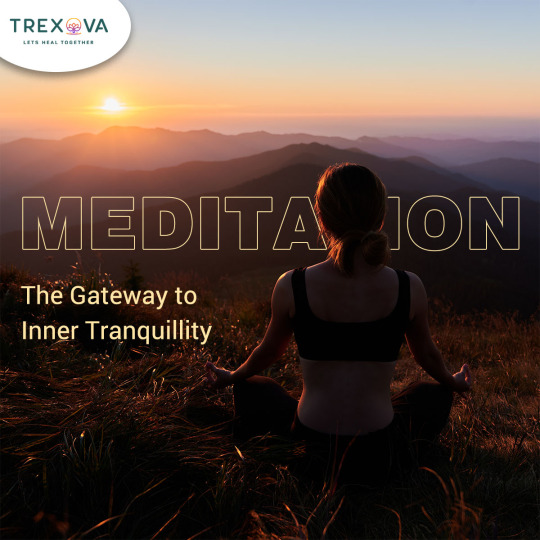
Techniques and Practices
There are countless meditation techniques and practices to explore, from breath awareness to loving-kindness meditation. Experiment with different methods to find what resonates with you and incorporate them into your daily routine.
Establishing a Routine
Consistency is key when it comes to meditation. Set aside a dedicated time and space for your practice, whether it's first thing in the morning or before bed. By making meditation a habit, you'll reap the full benefits of this transformative practice.
Overcoming Challenges
Meditation isn't always easy, especially in the beginning. It's normal to encounter distractions, restlessness and resistance. Remember to be patient with yourself and approach your practice with kindness and curiosity.
Tips for Beginners
1. Start small: If you are uncomfortable with meditation, start out with just a few minutes a day and work your way up to longer sessions.
2. Focus on the breath: Paying attention to the rhythm of your breath can anchor your mind and cultivate presence.
3. Let go of expectations: Meditation is a journey, not a destination. Release the pressure to achieve a certain outcome and simply allow yourself to be present.
Conclusion
In a world filled with noise and distraction, meditation offers a sanctuary of stillness and peace. Whether you're drawn to the transcendental bliss of TM, the mindfulness of Vipassana, or the gentle guidance of guided meditation, there's a practice suited to your needs. Embrace the journey within and discover the transformative power of meditation.
FAQs
1. How long should I meditate each day?
The length of your meditation sessions is not as significant as regularity. Every day, start with a short period of time and add more as you feel comfortable.
2. Can I meditate lying down?
While sitting is the traditional posture for meditation, you can certainly meditate lying down if that's more comfortable for you. Just be mindful of the tendency to fall asleep!
3. Is meditation a religious practice?
While meditation has roots in various spiritual traditions, it's not inherently religious. It's a secular practice that anyone can benefit from, regardless of their beliefs.
4. How do I choose the right meditation technique for me?
Try out various methods to find the one that works for you. Trust your intuition and choose a practice that feels natural and sustainable.
5. How can I calm my mind during a meditation session?
During meditation, it's quite normal for the mind to wander. Instead of trying to suppress thoughts, simply observe them with curiosity and gently bring your focus back to your breath or mantra.
0 notes
Video
youtube
10 Day Vipassana Course - Day 1 (English)
1 note
·
View note
Text
Vipassana Meditation a Pathway to Inner Peace
Vipassana Meditation is more than just a form of mindfulness practice; it’s a pathway to achieving inner peace. Amid the hustle and bustle of daily life, the pursuit for tranquility often feels like an uphill battle. Vipassana Meditation reveals itself as a silent sanctuary, promising serenity and stillness. This traditional meditation practice offers a journey towards self-understanding,…

View On WordPress
0 notes
Text
Exploring Vipassana Meditation and Finding the Perfect Vipassana Meditation Center Near You
Vipassana meditation, an ancient practice rooted in the teachings of Gautama Buddha, has gained remarkable recognition for its transformative power in the modern world. By cultivating mindfulness and insight, Vipassana offers a path to profound self-awareness and liberation from suffering. This article delves into the profound realm of Vipassana meditation, provides insights into its techniques, discusses the journey of choosing the right meditation center, and explores the numerous benefits it offers.
I. Introduction to Vipassana Meditation
Origin and Philosophy
Vipassana traces its origins to the Buddhist tradition, specifically to the Theravada school. It emphasizes the observation of bodily sensations, thoughts, and emotions as a means of understanding the impermanent nature of existence.
Core Principles
Central to Vipassana is the concept of impermanence (anicca), the unsatisfactory nature of phenomena (dukkha), and the absence of an enduring self (anatta). Practitioners explore these truths through direct experience rather than blind faith.
Benefits of Vipassana Meditation
Vipassana offers a multitude of benefits, from stress reduction and emotional regulation to enhanced self-awareness and clarity of mind. Through diligent practice, individuals can develop equanimity, leading to a more balanced and harmonious life.
II. Understanding Vipassana Technique
Mindfulness and Awareness
Vipassana meditation centre begins with the development of mindfulness, the ability to observe thoughts, emotions, and sensations without judgment. This heightened awareness is the foundation of insight.
Body Scanning
Practitioners progressively scan their bodies, observing sensations with precision. This process reveals the impermanent and ever-changing nature of bodily experiences.
Impermanence and Equanimity
Vipassana reveals the transient nature of all experiences, fostering equanimity—a state of non-reactive balance—regardless of whether the experience is pleasant, unpleasant, or neutral.
III. Deep Dive into Vipassana Meditation
Observing Sensations
The practice trains individuals to observe sensations objectively, recognizing that they arise and pass away. This insight dismantles the illusion of solidity in our experiences.
Unraveling Mental Patterns
Meditation centre near me allows practitioners to become intimately acquainted with their thought patterns, breaking free from automatic reactions and cultivating a more intentional way of being.
Cultivating Concentration
Through sustained observation of sensations, concentration deepens. This heightened focus enables practitioners to penetrate the layers of their consciousness.
Liberation from Suffering
By understanding the true nature of reality, practitioners achieve liberation from suffering (nibbana/nirvana), attaining a state of ultimate freedom and inner peace.
IV. Choosing the Right Meditation Center
Importance of a Suitable Environment
The meditation center's atmosphere greatly influences the practice. Serene surroundings facilitate concentration and introspection.
Researching Meditation Centers
Research various centers to find one that resonates with your goals. Investigate the lineage, teaching methods, and experiences of previous attendees.
Retreat Durations and Intensity Levels
Meditation centers offer retreats of varying lengths and intensities. Beginners may opt for shorter retreats, gradually progressing to more extended periods of practice.
Daily Schedule and Routine
Retreats follow a strict routine, beginning early and encompassing several hours of meditation interspersed with mindful walking, meals, and rest.
Noble Silence and Detachment
Noble silence, refraining from verbal and non-verbal communication, allows practitioners to turn inward. Detachment from distractions enhances the depth of practice.
Guidance from Experienced Teachers
Teachers offer guidance, clarifying nuances of the practice and providing personalized suggestions to navigate challenges.
VI. Benefits of Practicing Vipassana Meditation
Stress Reduction and Emotional Regulation
Vipassana equips individuals with tools to manage stress and regulate emotions effectively, promoting mental well-being.
Enhanced Self-Awareness
Practitioners develop a profound understanding of their thought patterns, behaviors, and emotions, leading to heightened self-awareness.
Improved Concentration and Clarity
Regular practice sharpens concentration, enhancing cognitive clarity and fostering better decision-making skills.
0 notes
Text
十日內觀記錄:關於緊張、倦意、與無所事事
如果要說到最近最深刻的感知的話,一定是我去參加十日內觀這件事吧,雖然不是第一次去了。因為拖延症太嚴重,這一篇我就只快速記錄3件,這次對我來講最重要的、我有特別去請益的事情;以及雖然沒有請益,但是自己得到了答案的事情。其實還有其他收穫,等隔陣子另開新文。
Continue reading Untitled

View On WordPress
0 notes
Text
#deep relaxation music#meditation#heeling practice#deep meditation music#Relaxation#Deep sleep#naturesounds#soothing Relaxation#meaningful story#inspirational#self-love healing#Rain meditation#Kundalini meditation#Vipassana meditation#affirmation#affirmation of the day#positive vibes#Empowerment#SleepMeditation#Gratitude#ChakraHealing#Zen#Calming#SelfHealing#SelfReflection#Spirituality#InnerPeace#Mindfulness#StressRelief#youtube
0 notes
Link
Friends, today I will tell you 15 ways to meditate. After doing which you will know how to do meditation, how to do meditation.
0 notes
Text
What Is Vipassana Meditation?
What Is Vipassana Meditation?
What Is Vipassana Meditation?
Vipassana meditation is a type of mindfulness meditation derived from the Buddha’s original teachings. It is a method of observing oneself without judgement, and it is said to aid in the attainment of enlightenment. It is usually completed over the course of ten days. Here’s what you should know.
Vipassana, which means “to see things as they truly are,” is one of…
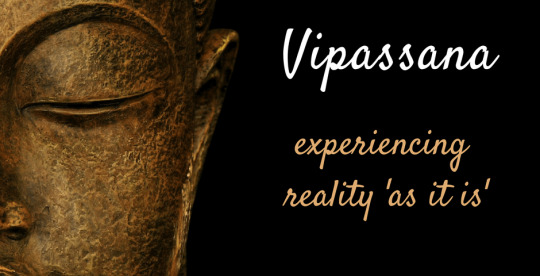
View On WordPress
1 note
·
View note
Link
विपश्यना की ध्यान-विधि एक ऐसा सरल एव कारगर उपाय है| जिससे मन को शांति प्राप्त होती है और एक सुखी, उपयोगी जीवन बिताना संभव हो जाता है।
0 notes
Text



19 notes
·
View notes
Text
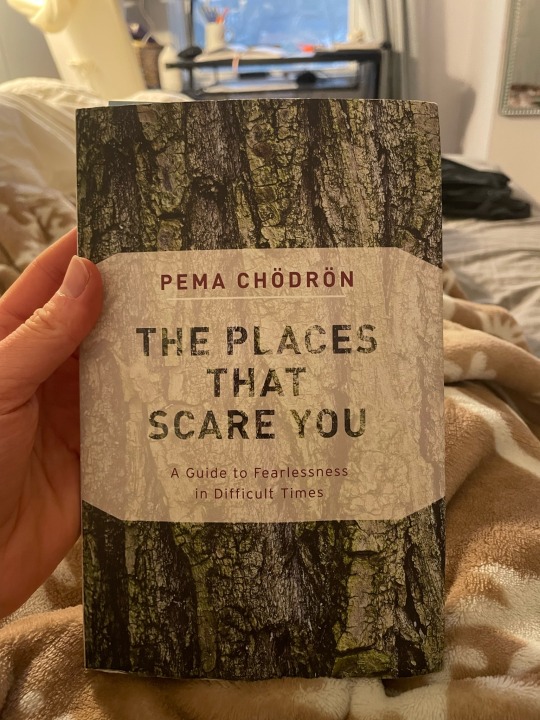
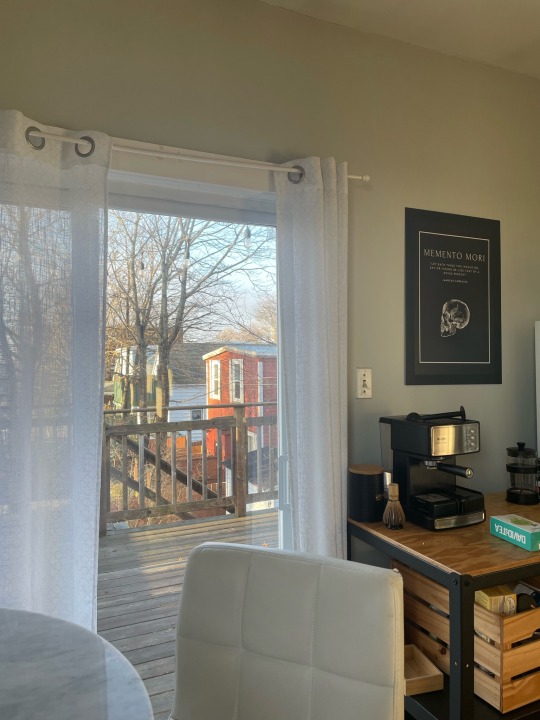

I went on a 10 day Vipassana meditation retreat and it was one of the hardest things I’ve ever done and one of the most worthwhile (none of these photos are from the center). Things I thought over and over again:
Who are you when you’re not working, reading, teaching, scrolling, consuming? Who are you when you’re not with your partner or friends or family? Who are you without your possessions? Can you be with yourself? With the reality of this moment? Can you BEAR it?
19 notes
·
View notes
Video
youtube
10 Day Vipassana Course - Day 4 (English)
#youtube#S. N. Goenka#Vipassana#Vipassana Meditation#mindful meditation#Gautama Buddha#Mind#The Hard Problem of Consciousness
0 notes
Text
Exploring the Profound Journey of Vipassana Meditation
Introduction
In the bustling modern world, stress, anxiety, and the constant pursuit of success often leave us feeling disconnected from ourselves and others. As we seek balance and harmony in our lives, one ancient practice has been gaining popularity for its transformative power: Vipassana meditation. In this blog, we will delve into the essence of Vipassana meditation, the significance of a Vipassana meditation center, and how you can find one near you to embark on a journey of self-discovery and inner peace.
Understanding Vipassana Meditation
Vipassana meditation, also known as insight meditation, traces its origins back to ancient India over 2,500 years ago. It was rediscovered by the great Indian sage, Gautama Buddha. The word "Vipassana" comes from the Pali language, where "vi" means "clearly" or "special," and "passana" means "seeing" or "perceiving." Vipassana is about observing the reality of our own experiences with mindfulness, awareness, and non-reactivity.
This meditation technique focuses on developing deep self-awareness by paying attention to bodily sensations, emotions, and thoughts without judgment. By practicing Vipassana, one gains insight into the impermanent and ever-changing nature of existence, fostering a profound sense of liberation and peace.
Importance of a Vipassana Meditation Centre
While Vipassana can be practiced individually, attending a Vipassana meditation center offers an immersive and supportive environment to dive into this transformative practice. These centers are specifically designed to facilitate a deep and undistracted meditation experience, allowing participants to go beyond the surface level of their consciousness.
Here are some key benefits of attending a Vipassana meditation center:
Guided Instruction: Trained meditation teachers provide valuable guidance and support, ensuring that practitioners grasp the essential techniques of Vipassana meditation correctly.
Structured Retreats: Vipassana centers often conduct residential retreats that last for several days. Such an environment allows participants to disconnect from their daily routines and immerse themselves entirely in the meditation process.
Silent Environment: Silence is maintained throughout most of the retreat to minimize distractions and allow practitioners to concentrate fully on their inner journey.
Community Support: Engaging with like-minded individuals on the same spiritual path fosters a sense of community and support, enhancing the overall meditative experience.
Finding a Vipassana Meditation Centre Near You
The popularity of Vipassana meditation has led to the establishment of meditation centers in various parts of the world. Finding a Vipassana meditation center near you has become relatively more accessible.
Here are some steps to help you find a Vipassana meditation center near your location:
Online Search: Begin by conducting an online search using the keywords "Vipassana meditation center near me." Search engines and meditation organization websites can help you locate nearby centers.
Meditation Apps: Some meditation apps and platforms offer location-based searches for meditation retreats and centers, making it convenient to find one in your vicinity.
Local Meditation Groups: Inquire about local meditation or spiritual groups, as they may have information about Vipassana centers in the area.
Recommendations: Seek recommendations from friends, family, or colleagues who have previously attended Vipassana retreats.
Conclusion
Vipassana meditation is a profound journey of self-discovery and inner transformation, leading to greater clarity and peace of mind. Attending a Vipassana meditation centre near you can be a life-changing experience, providing the perfect environment to delve deeper into this ancient practice.
If you find yourself yearning for tranquility amidst the chaos of everyday life, consider exploring Vipassana meditation and its numerous benefits. As you embark on this journey of mindfulness and awareness, remember that the path to inner peace begins with a single step – and a nearby Vipassana meditation centre may just be the perfect place to start. So, take the leap, and may your exploration of Vipassana meditation lead you to a harmonious and enlightened existence.
0 notes
Text
5 Underrated, Hard to describe parts of Meditation
Meditation weirdly feels like a game sometimes, where every once a while or with the right teaching, a new "Skill" is unlocked that opens up a whole new area to explore and play with.
Some of these feel really weird and abstract to explain, I wonder if others can relate to some of them or even try them out based on these descriptions?
Zooming out, Noticing the Sense itself:
Instead of feeling something, paying attention to "The Felt Sense". Instead of seeing, paying attention to "The Visual Sense".
Easiest to first try with vision - Look ahead, and without moving your eyes at all, focus on the edge of your peripheral vision.
Attention can move independently of sensory apparatus, so try to widen it as much as possible, focus on the entirety of your vision instead of any object. Let attention relax, like all of your vision is just one cohesive painting, no objects or borders.
Worth trying with physical sensation and sounds, too! Smell and taste might be more concentrated, but also an option?
With physical sensation in particular, maintaining attention on the ENTIRE felt sense can be very very useful for meditation, relaxation, emotional processing, and simple enjoyment. Happiness and peace are felt in the body!
Breathing into body parts / emotion:
May seem like a basic technique to some, but easily the most approachable and universally USEFUL one.
What does it mean to "breathe into your toe" like some teachers suggest? Obviously air stops at the lungs, right? but the flow in the body-sense / attention doesn't!
Directing attention in a flow from nostrils to throat to torso to any body part that is aching, dull, or needs more energy can have a surprising effect, whether this is just psychological or has some physiologic effect of releasing tension.
Breathing out "from" that area can help too - can try either channeling the breath (and whatever tension you want to release with that breath) through the lungs and out the mouth or nose, OR can try to imagine the air coming in and out DIRECTLY from that area, then flowing through the body.
This is just a really great relaxation technique for tension, especially when there's an EMOTION felt in the body! Breathe into the emotion to open it up, give it space and calm, then let some of the emotion get carried out with exhalation. Probably THE most mundanely useful of these, saved me a whole lot of unneeded pain and conflict.
Absorption / Opening up to experience:
This one is based on Rob Burbea's teachings - this movement where you "open up" fully to an experience, ABSORB the sensation into you more intensely or with less resistance / obstructions. Can feel like having a sensation in the hands and going INTO that sensation, deeper and closer, or maybe feeling the entire body and opening up the floodgates, letting that sensation fully envelop, consume, or fill you.
Might feel gradual at first, but with practice and repetition can feel like flicking a switch and suddenly sharpening the senses!
Can turn a minor meditation moment into something amazing. Very fun to do out in nature too, feel like you absorb the environment with all the senses!
Distance, movement in thoughtspace:
Similar to above, Angelo Dillulo wrote about playing with the distance we may feel we have towards a thought, or thoughtspace itself. Diving deeper into a thought, almost like looking at a "solid" cloud from the outside but going so deep into it that all you see is "cloudstuff", formless. Or trying to look at thoughts from far away, a distant and unaffected observer.
Fun way to do it is imagine you're "consuming" thoughts, letting them go into "you" or encompassing them inside yourself, letting them fall into this mass of growing awareness and focus in meditation, not just staring at them like at a screen. Intimacy with the EXPERIENCE of thinking rather than the content of thoughts!
Noticing the unaffected part of experience:
Odd one that may not always feel available, but it's a bit like listening to the silence that encompasses, holds, or allows noise.
Or when there's a strong physical sensation, feeling how a part of attention ITSELF is unaffected by any sensations at all.
Can feel like noticing the noticing capacity itself, the space that holds experience, directing awareness towards its source or "container", or towards some ineffable quality that isn't quite part of the sense-field or sense objects, a kind of stillness that is always present.
Many meditation techniques may lead to this.
All of these get much easier AND more intense with practice, and can really open up interesting experiences, powerful meditative states, increased focus and relaxation, or just a lot of fun!
Sometimes it's nice to just have that ability to play with the senses / consciousness idly, always available no matter the situation.
Would love to hear other ones you've experienced, other names or descriptions for these based on your methods, or what these feel like for you if you've tried them!
Let me know if there are any questions or things to clarify, too.
#meditation#spirituality#vipassana#samadhi#meditation techniques#senses#consciousness#the reason why we suck at life is because we weren't taught it's not a sandbox - it's a metroidvania
4 notes
·
View notes